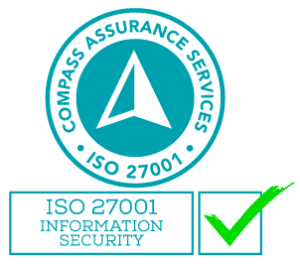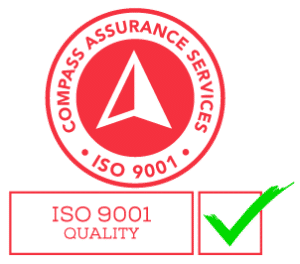The days of relying on a single cloud provider are over; today, businesses are leveraging the strengths of multiple clouds to optimise performance, reduce costs, and enhance resilience.
However, managing security across multiple cloud environments can feel like trying to tame a multi-headed beast — each cloud service has its own quirks, security risks, and requirements. Without proper safeguards, organisations may expose themselves to a range of cyber threats, from data breaches to compliance failures.
What is a Multi-Cloud Environment?
A multi-cloud environment refers to the use of multiple cloud computing services from different providers within a single architecture. Unlike a single-cloud approach, where all services are hosted by one provider, a multi-cloud strategy allows organisations to leverage the strengths of various cloud platforms. This approach typically includes a mix of public, private, and hybrid clouds, depending on individual business requirements.
Benefits of Multi-Cloud Environments:
- Enhances flexibility by allowing businesses to choose the best cloud service for each specific application or workload. This can lead to improved performance, cost savings, and better business-IT alignment.
- Avoid vendor lock-in, enabling organisations to switch providers if needed without significant disruption.
- Can improve risk management by distributing resources across multiple platforms, reducing the impact of a potential service outage from any single provider.
- Enables organisations to optimise resources by selecting cloud services that best match their operational and financial requirements.
Security Challenges in Multi-Cloud Environments
While a multi-cloud strategy offers significant advantages, it also introduces a range of security challenges that businesses must address to protect their data and operations.
Complexity
Each cloud provider has its own security protocols, tools, and configurations, which can make it difficult to maintain a consistent security posture across the entire environment. This complexity increases the likelihood of security gaps, misconfigurations, and human error, all of which can lead to vulnerabilities.
Data Security
Data often moves between different cloud platforms and on-premises infrastructure, increasing the risk of exposure. Each cloud provider may have different encryption standards and data protection measures, which can complicate the process of ensuring that data remains secure during transmission and storage.
Additionally, the lack of a unified approach to data security can make it difficult to monitor and control who has access to sensitive information across various platforms.
Compliance
Different cloud providers may have varying compliance standards and certifications, which can create challenges for organisations that need to adhere to specific regulatory requirements, such as GDPR or HIPAA.
Ensuring compliance adherence across all cloud platforms requires a comprehensive understanding of each provider’s capabilities and a robust strategy for managing compliance obligations.
Visibility and Control
Gaining complete visibility into all cloud resources and activities can be challenging. This lack of visibility can hinder an organisation’s ability to detect and respond to security threats promptly. Moreover, the distribution of workloads across multiple clouds can lead to a loss of control over critical security functions, such as identity and access management (IAM), making it harder to enforce consistent security policies.
Multi-Cloud Security Solutions
Securing a multi-cloud environment requires a proactive, multifaceted approach to cyber security that addresses the specific challenges posed by using multiple cloud providers.
1. Unified Security Management
Implementing a unified security management platform is crucial for gaining comprehensive visibility and control over all cloud resources. Such platforms allow you to monitor security events, manage configurations, and enforce security policies consistently across all cloud providers.
By centralising security management, organisations can reduce the risk of oversight and ensure that all cloud environments adhere to the same security standards.
2. Encryption and Key Management
Encryption is a critical tool for protecting data both at rest and in transit. In a multi-cloud environment, it is vital to ensure that data is encrypted across all platforms using strong encryption methods.
Equally important is effective key management, which involves securely storing and managing encryption keys. This ensures that only authorised users can access encrypted data, reducing the risk of data breaches.
3. Automated Compliance Monitoring
Given the complexity of maintaining compliance across multiple cloud providers, automated compliance monitoring tools are indispensable. These tools continuously assess your cloud environments against relevant regulatory requirements and industry standards, helping to identify and remediate compliance gaps.
By automating this process, organisations can reduce the risk of non-compliance and avoid costly penalties.
4. Zero Trust Architecture
Adopting a Zero Trust security model is another effective solution for securing multi-cloud environments. Zero Trust operates on the principle that no entity, whether inside or outside the network, should be trusted by default.
This approach involves strict identity verification, micro-segmentation of networks, and continuous monitoring of user activity. This allows organisations to significantly reduce the risk of insider threats and unauthorised access.
Multi-Cloud Cyber Security Best Practices
1. Regular Security Audits
Conduct regular security audits across all cloud platforms to identify vulnerabilities and ensure that security configurations are properly maintained. Audits should include reviewing access controls, checking for misconfigurations, and assessing compliance with security policies.
2. Comprehensive Identity and Access Management (IAM)
Implement a strict IAM strategy that includes multi-factor authentication (MFA), role-based access controls (RBAC), and least privilege principles. This ensures that users have only the access they need to perform their jobs, reducing the risk of accidental or intentional misuse of cloud resources.
3. Continuous Monitoring and Threat Detection
Deploy advanced monitoring tools that provide real-time visibility into all cloud activities. Continuous monitoring helps detect suspicious behaviour or potential threats early, allowing for swift response and mitigation. These tools can also provide alerts for unusual activity, such as unauthorised access attempts or large data transfers.
4. Data Backup and Disaster Recovery Planning
Ensure that comprehensive data backup and disaster recovery plans are in place for all cloud environments. Regularly test these plans to confirm that data can be restored quickly and accurately in the event of a security incident or data loss.
5. Employee Security Training
Regularly train employees on cloud security best practices, including recognising phishing attacks, safeguarding credentials, and adhering to company security policies, such as password policies. Well-informed employees are less likely to make mistakes that could compromise cloud security measures.
6. Vendor Risk Management
Engage in thorough vetting and ongoing assessment of cloud service providers to ensure they meet your organisation’s security and compliance standards. Establish clear security requirements in contracts and maintain open communication with vendors about any security concerns or incidents.
7. Implement Security as Code
Adopt a “security as code” approach by integrating security practices into your DevOps pipeline. This includes automating security testing during the development and deployment processes, ensuring that security is baked into your cloud applications from the ground up.
Secure Your Digital Assets with the Right Cloud Security Solutions
Securing a multi-cloud environment is a complex but vital task to protect your organisation’s data and maintain business continuity.
The cloud security experts at Steadfast Solutions can help protect your business from potential threats and ensure compliance across all cloud platforms. Reach out to us for a consultation today, and let’s work together to build a safer, more resilient cloud strategy to strengthen your security posture.




